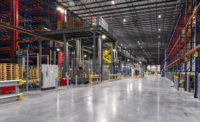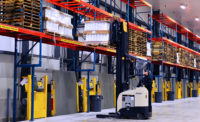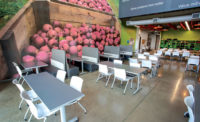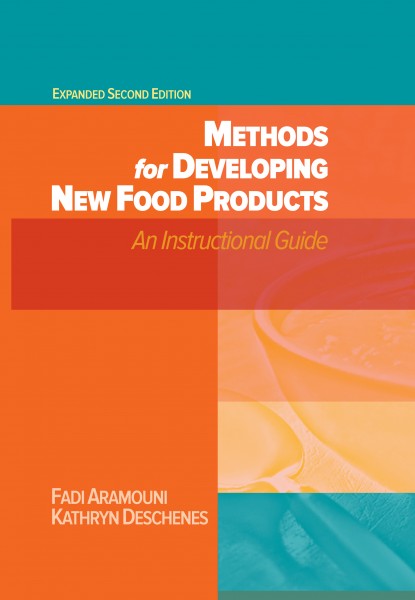Whether it’s upgrading, renovating and replacing existing buildings, or building new from the ground up, the refrigerated and frozen food industry continues to
| Jump to: |
experience an increase in demand for automation, sustainability and sanitation.
Refrigerated & Frozen Foods interviewed several architectural, engineering, construction and design-build firms to learn more about the trends behind cold storage construction and what factors play into deciding whether to renovate an existing facility or just build anew. Here’s the latest from inside the construction zone:
Automation, sustainability, sanitation
The major trends design-build and A&E firms are seeing revolve around sustainability, sanitation and maintenance, according to Stuart Jernigan, director of preconstruction, A M King Construction Co., LLC, Charlotte, N.C.
“From a construction perspective, this includes LED and induction lighting, daylight harvesting, lighting controls, variable frequency drives on motors, solar energy (for certain applications such as lighting and hot water), cleanable surfaces and maintenance-free floors,” Jernigan adds.
From a manufacturing standpoint, firms are seeing more upgrades, renovations and replacements of existing buildings to incorporate new equipment and technology and to upgrade the overall building construction or interior, says Mike Netting, divisional vice president, distribution facility services for Stellar, Jacksonville, Fla.
“Manufacturers are simply replacing old dilapidated buildings in need of renovations or replacement,” he says.
As this occurs, he adds, there is a heightened awareness of food safety that is driving all construction.
“Food plants are realizing that they need to upgrade their facilities and employ new technologies to stay ahead of FSMA,” says Netting.
Dairy plants in particular have undergone significant improvements to keep up with Food Safety Modernization Act (FSMA), Global Food Safety Initiative (GFSI), Safe Quality Food (SQF) and British Retail Consortium (BRC) requirements.
“Our dairy clients have experienced strong growth over the past few years with an emphasis on production of products for private label business, resulting in the need for the expansions and streamlining output efficiencies via automated processing and packaging lines,” says Jack Michler, regional sales manager for ESI Group USA, Hartland, Wis.
In addition to food safety upgrades, companies are overhauling their facilities to become more automated and energy efficient.
“We see a continuing emphasis on reducing energy costs,” says Richard O’Connell, president of Primus Builders, Woodstock, Ga. “Owners are achieving this through more efficient refrigeration systems utilizing a longer term view on overall life cycle cost vs. initial cost; water usage and condensate water reclaim; utilizing LED lighting fixtures; and integrating more efficient thermal systems and door management practices. We are also seeing a continued increase in demand for automated facilities.”
To further enhance their food safety mission, food processors are installing smooth-faced IMP walls instead of the traditional stucco-embossed surface, according to Curtis Manns, senior designer for E. A. Bonelli + Associates, Inc., Oakland, Calif.
“The smooth face is more hygienic, as it is easier to clean and maintain,” he adds.
There are also more and more projects pertaining to high-rise and automated storage and retrieval systems (ASRS) vs. the standard rack systems.
“This is an effort to combat property constraints (cost of real estate, location availability and available areas on existing operational sites), operational costs impacted by labor and analyzing material handling systems’ initial costs and maintenance,” says Forrest McNabb, senior vice president of Big-D Construction Corp., Salt Lake City, Utah.
Rising economy results in increase in capital
As the economy recovers, more capital becomes available for construction projects, however companies are re-investing in existing plants rather than building new ones.
Owners are interested in plant-attached storage and distribution, as well as high-rise automation utilizing full pallet and/or case pick automation, says O’Connell.
Companies are investing in global opportunities, such as China, Netting adds.
“New facility expansions need to meet the requirements of current food safety protocols and often include replacement of air handling equipment with hygienic systems and health, welfare and training facilities to maintain a strong workforce." |
Clients with secured financing are focusing on equipment replacement with new “state-of-the-art” automated processing and packaging equipment, Michler says.
“New facility expansions need to meet the requirements of current food safety protocols and often include replacement of air handling equipment with hygienic systems and health, welfare and training facilities to maintain a strong workforce,” he adds. “Capital seems to be freeing up for established businesses with strong balance sheets and equity positions.”
How food safety standards impact design
As FSMA kicks into high gear, what is the impact on sanitary design in both old and new cold storage facilities?
Outdated facilities, for instance, impose significant product contamination risk due to the existence of faulty facility design, inadequate construction materials and outdated mechanical systems, Michler says.
“Some examples of food safety improvements are controlling unauthorized access of plant personnel to production/process areas; designing proper site, floor slab and roof drainage systems to eliminate water ponding that can cause harborage of hazardous pathogens; and isolation of plant areas via partitioned separation of raw, production, packaging and warehousing space, etc. to mitigate cross-contamination hazards,” he adds. “These physical separations allow better designs of critical mechanical zones to better control room air moisture levels, which can be a key contributor to microbial growth.”
In food processing plants, more attention is being given to control points of access to prevent or eliminate a food safety hazard, Manns says.
“Personnel hygiene transition vestibules are being more widely used than they have in the past. They provide an intermediary area between ‘dirty’ and hygienic environments,” he adds. “Oftentimes, employees will use these spaces to suit up before entering process areas.”
In some cases, several design standards have been implemented and enforced long before these acts were passed.
“Plant managers and executives are much more educated and focused on food safety today,” says Netting. “They’re recognizing that making upfront investments in sanitary design can prevent problems down the road and save significant dollars when you factor in the cost of a recall.”
Is LEED-certification worth it?
When it comes to the cost, time and resources of obtaining LEED (Leadership in Energy and Environmental Design) certification, is it worth it?
Refrigerated & Frozen Foods polled its readers about what facet of cold storage construction is most important to a business, and obtaining LEED certification or other green initiatives only garnered 11% of the votes vs. performance and cost, which accounted for 37% each. (For the remainder of the poll results, go to www.RFFmag.com and visit our Poll Archives).
“Some organizations believe that it is good business sense to invest in LEED certification and use that certification in their marketing efforts to consumers. Other companies, especially those in the B2B area, don’t feel the investment is worth it,” says Netting. “True LEED certification requires accountability all the way through the supply chain, and many consumers are more focused on the end product they consume.”
Owners are embracing the long-term values of LEED certification, and in turn, selling those features to their prospective customers, both internally and externally, O’Connell adds.
In fact, LEED-certified buildings cost less to operate because they reduce energy and water bills by as much as 40%, says James Strack, president and CEO of Facility Design Group Inc., Smyrna, Ga.
“If a company is serious about saving money, conserving energy, reducing water consumption, improving indoor air quality, making better building material choices and driving innovation, then LEED is the best choice to ensure that a building’s performance meets its expected efficiency standards over its lifetime,” Strack says.
However, obtaining LEED and other food safety certifications is solely up to the manufacturer.
“The final decision lies within each organizations’ leadership ‘to be or not to be’ LEEDers in the industry,” says McNabb.
Alternate energy and how it makes—or breaks—the bottom line
Most alternate energy or recovering energy solutions such as solar, wind and waste-to-energy, to name a few, can be quite costly, especially when implementing such solutions company-wide. However, waste-to-energy solutions can also be very cost effective.
“We can recover waste heat from manufacturing equipment and reheat the water to use for steam generation and cleaning,” says Netting. “Wastewater can also be recovered and treated re-used for irrigation. Quite simply, plants are looking for cost savings and return on investments that make good business sense, especially if they can reduce their overall utility cost.”
Design-build firms like Primus Builders experienced a great deal of commitment to solar, wind, waste-to-energy and water reclamation from its customers.
“The overriding desire is to reduce the facility’s total operating cost as well as reducing its carbon footprint,” O’Connell says. “We recently completed a project that utilizes a waste-to-energy system. Food that can’t be sold or donated is converted into energy that powers [the company’s] distribution center in Compton, Calif. It’s an anaerobic system and can convert up to 55,000 tons of food waste a year, which reduces local truck trips by 500,000 miles.” (For more on this waste-to-energy system, go to “Plants of the Future,” page 30).
Meanwhile, ESI designed a custom cistern system for irrigation at a new 291,000-square-foot distribution center.
“The system collected condensate from the HVAC equipment, cooling tower water, as well as rain water from 15% of the roof area,” says Michler. “The cistern system was sized to maintain 25,000 square feet of landscaping at the front entrance of the facility.”
Depending on the site location, geothermal is another significant solution, says McNabb.
“All users are focused on operation and maintenance costs, along with the right choices in sustainability being incorporated if they are value added,” he adds.
For its part, ONEsource Facility Solutions, the Smyrna, Ga.-based provider of one-source services through Facility Design Group, has installed solar, bio-digesters and natural gas co-generation, says Ed Wright, president and CEO of ONEsource.
“Most of our clients are looking to be environmentally responsible while trying to control the energy costs in their respective businesses,” he adds.
CO2 and ammonia—game-changing gases
When it comes to CO2 and ammonia, what does the industry need to know?
For starters, that CO2 and ammonia are considered to be two of the most efficient refrigerants in the industry, yet remain among the most controversial.
“CO2 is a very viable alternative in low-temperature facilities with -20° to -30° temperature requirements,” Netting states. “Once you reach -10° and higher, it’s less efficient. Ammonia is more efficient for higher temperatures. Yet many manufacturing plants are pushing to get ammonia out of areas where people are working. We’re often brought in to change ammonia to CO2 to keep ammonia confined to the machine room. It’s not as efficient, but the trade-off is employee safety.”
CO2 is also becoming more popular with prepackaged systems for smaller operations, which “allows the facility to realize the energy savings without the added cost of engine rooms,” says O’Connell. “Both refrigerants are very effective, and depending on operating conditions/requirements, they will both continue to play a major role as the refrigerant of choice.”
But, the industry is still waiting for further validation that CO2 and ammonia are what they seem to be.
“The critical factors are safety, upfront cost and efficiency differences,” says Jernigan. “There are many conflicting statements and opinions in the industry.”
Determining ROI on retrofit projects
Because each project is unique, different components and variables must be taken into account when determining a return on investment on retrofit projects, and this sometimes can be a very difficult assessment.
“Traditional wisdom looks for higher productivity, lower operating costs and a reduction in compensable injuries,” says Wright. “These items can be easily associated with calculable dollar savings. The most difficult determination still is the expenditure of monies for purely food safety reasons. These items need to be calculated by attempting to assign the cost of not making the changes. Food safety investments can be looked at as an additional insurance to prevent food safety issues and the negative publicity associated with them.”
Improvements in refrigeration, lighting and thermal energy are obvious immediate needs with predictable ROIs, says O’Connell.
“Weigh this against the cost of building a Greenfield facility and that can help an owner determine if a retrofit is worth the expense,” he suggests. “Refrigerated and frozen food facilities eventually reach their useful life expectancy and become inefficient. Owners should consider replacement of the facility when considering incremental ROI to existing facilities.”
Likewise, LEED certification awards companies who renovate existing facilities vs. investing in Greenfield projects, Netting says.
“There is value in the outer shell of existing building and infrastructure that is already in place. If we completely demolish everything except the building shell, we can upgrade and implement new technologies, equipment and process lines, which pay off in production efficiency,” he says. “Further, by utilizing state-of-the-art technologies in the renovations, we can still get the benefits of a more energy-efficient plant. There are concessions that may require the plant to make in terms of how to make the existing building work within the desired operational plan. If there is a large penalty in the labor and production in terms of efficiencies, a retrofit project may not work. It really comes down to the total delivered cost to get a plant up and operational and the throughput.”
The option to build up, out or new remains open, however regardless of the final decision, today’s trends show any decision can be the right one.
















